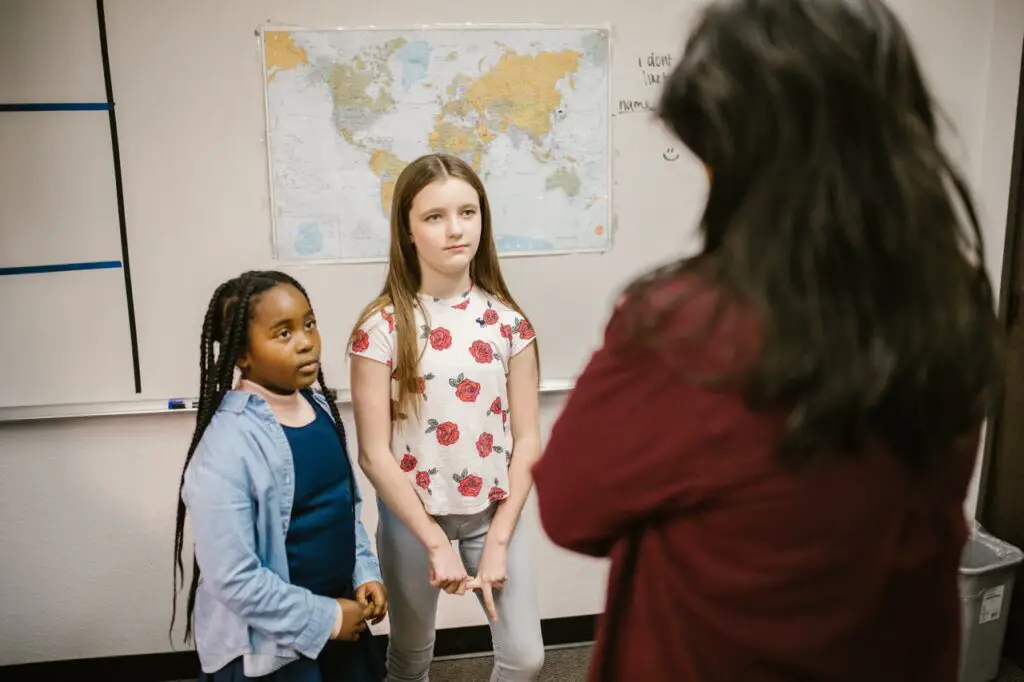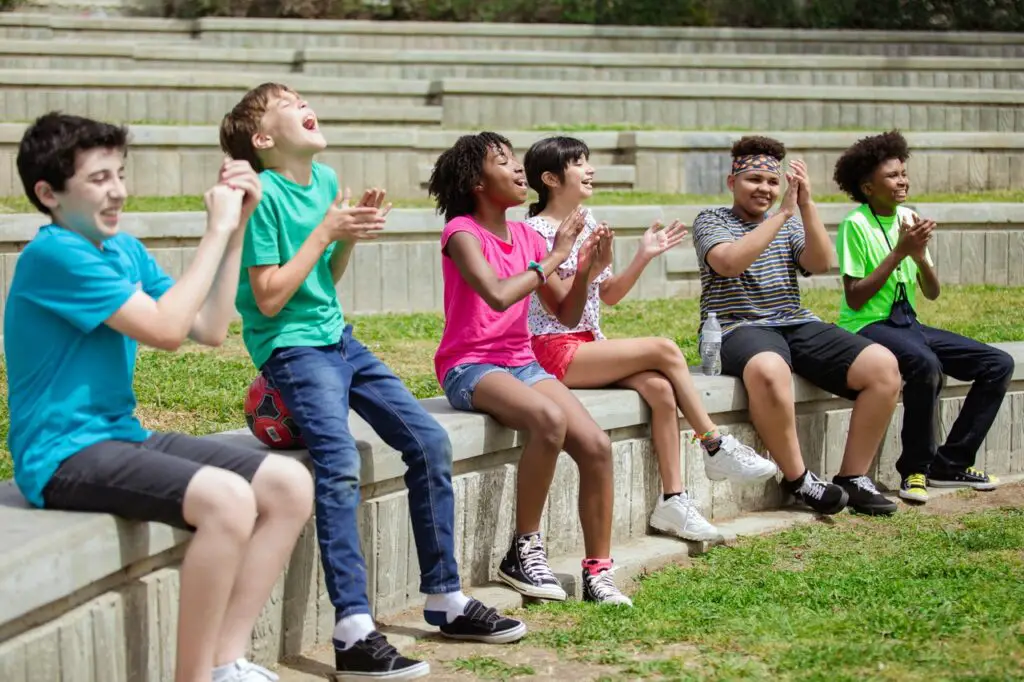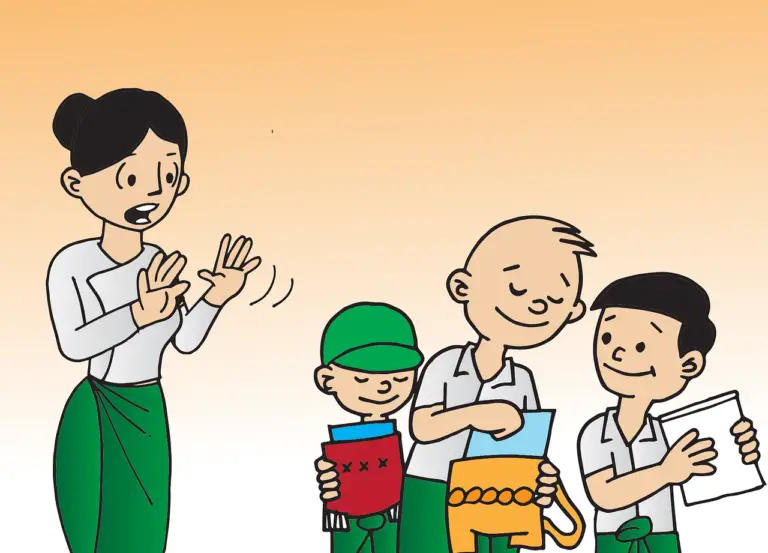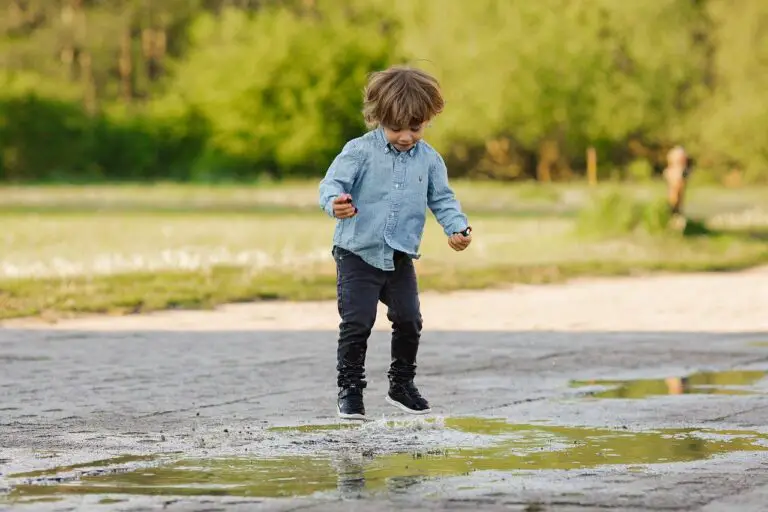Teaching English conversation classes with kids can be tricky. It’s not like adults, who have (mostly) developed good social skills and are motivated to speak.
Often, children are in class because their parents have put them there, and they don’t always have the confidence or ability to hold up their end of a dialogue.

You’re going to need some kid-specific questions and prompts that will get your young students motivated to express themselves.
And guess what? You’re in the right place!
In this article, you’ll find a lot of question types, prompts and activities that are adapted for English conversation classes with children. Of course, use your own judgement to decide which will work best with your specific students, and feel free to modify them!
Tell me (5 things) about
When speaking with children, it’s very easy to fall into the pattern of you asking questions and the student responding with “yes”, “no”, or as little information as possible.
For example:
Teacher: What did you do at the weekend?
Student: I went to the park.
Teacher: What did you do there?
Student: I played.
Teacher: Who did you play with?
Student: My brother.
Teacher: Is your brother older than you?
Student: Yes.
Beginning to sound like a police interrogation, right?

Adults generally know that they should give more details in their answer, to keep the conversation going, otherwise it feels awkward.
But kids don’t seem to notice, or care. It’s perfectly normal for them to answer the question with just the information you asked for.
Instead of falling into this trap, ask them open questions and give them a numerical target to hit.
That’s where the “Tell me (5 things) about” structure comes in.
“Tell me about your weekend” opens the field a lot more than “what did you do at the weekend?” It allows the student to talk about what kind of weekend it was – how they felt – as well as saying the things they did.

For some kids, this is enough to get them chatting, but with most, you’ll want to add in the “5 things”.
It doesn’t have to be five, of course. Sometimes three is plenty, or you might want to do more. It varies depending on your student. Saying three detailed things is the same as saying 7 very brief ones.
The trick is to find a number that’s just beyond the student’s immediate responses, so they have to think a little harder.
Having that numerical target sets the expectation of how much they should speak, which isn’t always obvious to them.
Other questions that follow this structure are:
- Tell me 5 things about your best friend
- Tell me 5 things about a sport you practise
- Tell me 5 things about your house
There are many more. Anything that has plenty of details works great.
Show and Tell
Kids love talking about their stuff. Toys, games, bedroom, clothes, something they found on the street… whatever it is, they’ll want to tell you all about it.
Harness this. But refrain from always making it a public speaking exercise. There’s a time and a place for standing up and presenting something, but when they’re at an early stage with a language, it can be too much pressure.
Instead, just get them to speak to you like they would a friend.

I’ve had kids tell me all about their Lego sets, football cards, pet cat, paintings they did in their free time, and musical instruments they’re learning, just to name a few.
And when they’re doing this, they speak continuously, without fear.
The trick is to show great interest and very little prior knowledge (even if you’re familiar with the topic).
But don’t expect a coherent, structured guide to what it is they’re talking about. It’ll mostly be random ideas and information thrown at you chaotically. That’s fine. We’re not working on presentation skills.
What you can do to guide them a little is ask them about things that you think might prompt an excited answer.
Let’s say it’s a musical instrument – the clarinet, and they immediately start telling you all about what notes the different keys represent. Let them do that for a while, then ask, “how do you make a sound?”
Then they’ll get very excited and tell you about the technique (and probably display it for you – hopefully not too badly).
You can ask them where they store it, how to clean it, and all sorts of extra things that they might not otherwise think of.

Bear in mind that they won’t speak continuously in English throughout the whole show & tell. Some of it will be showing with gestures and pointing, because they don’t know specific vocabulary. You can help them out with that as you go.
The point is, they have something they care about deeply and they get to share it with you. And kids absolutely adore doing that.
Role play
If you’ve read anything on this website before (or watched my YouTube channel), you’ll have expected role play to come up. It’s simply the best speaking activity out there, if you get it right.
Kids naturally role play. We all did it as kids, pretending to be soldiers, doctors, teachers, princesses… everything, really.
Most guidance about role play (including my own) targets upper beginners or intermediates who are typically 8 or older. If that’s the age and level of your class, then you should definitely check out my series of YouTube videos on how to make role play shine.
Start with this video here:
But if you’re teaching very young children (3-8), take a slightly different approach.
It’s going to be a lot more free-form. Instead of having pre-defined roles and an overall objective, with young students, it’s best to let them take the lead.
You can suggest something like “let’s pretend we’re in a hospital. You’re the doctor, and you’re the patient.” If you’re teaching one-to-one, then you should be one of the roles (ideally the patient – it’s best to let students be the authority figure).
Take advantage of props and the classroom, if you’re teaching in-person. Kids will do this without blinking, picking up pens to use as needles, lying down on tables for operations, etc. This is all great.

Let students be in charge of where the role play goes and, as long as they’re speaking in English for the most part, go along with their ideas. And if you think it’d be fun, add in some suggestions.
What you want to avoid is directing the role play too much. If you take away their agency, they’ll quickly lose interest.
They should have enough English to handle simple exchanges. If they don’t, then you shouldn’t do role play and, I’d argue, you shouldn’t really be doing a conversation class.
But even with quite limited phrases and sentences, you can get kids chatting away in a make-believe situation.
Create something together
A fantastic way of getting young students to express their ideas is to design and/or create something as a group.
The best example is drawing a town. Get a big piece of paper (or a blank digital canvas) and get your students to say what is in the town. Draw what they tell you.
At first, they’ll say simple things like. There’s a school. There’s a house with a family in it. Get them to elaborate with more details, using the structure from earlier, “Tell me (5 things) about”, although most of the time it’s best to make it three details instead of 5.

Encourage creativity. Kids will begin with regular things, but soon start coming up with all sorts of wacky stuff, and that’s all great. It doesn’t have to be a realistic town!
They can say pretty much whatever they like, within the boundaries of a normal classroom environment, although if you’re hoping to practise vocabulary around places in the town, guide them back in that direction if they go off on a wild tangent.
You might be tempted to let them draw the picture, but I’d avoid this. Firstly, it’ll take a lot longer, especially if you have multiple students, and they’ll be less likely to talk. If they can just draw what they want, why would they say it to you?
Plus, it’s fun for them to get you to draw the weird and wonderful things they come up with. And if you’re no good at art, don’t worry. I’m pretty terrible! Often it makes for a lot of laughs when your drawings turn out wonky!
You can go pretty deep with this. Depending on how your students engage with the activity, you can burrow down into details like who owns the candy factory and who lives in the upside-down house.
It can become a multi-session project as you spend a chunk of each class fleshing out your creation.
And you don’t have to limit it to a town. Here are some alternatives:
- Zoo
- Theme park
- Solar system
- Museum
- Shopping centre
Turn the tables – they ask you questions!
A lot of conversation classes end up with the teacher asking the students a lot of questions. This is usually fine, because questions tend to be shorter and answers longer, so the students speak more.
But it’s important not to neglect the skill of asking questions. In real life, when your kids grow up, they’ll have to ask things to many people.
So get them to be the questioner, and you have to answer!

This switches up the dynamic and is a good chance for kids to learn about you and your interests.
Typically, kids are quite self-centred. That’s a normal part of development. But when they realise that you’re another human being with your own interests, tastes, belongings and ideas, it suddenly becomes important to them to learn about them all.
And, yes, at some point they will ask you about your relationship status!
Most of the questions will be along the lines of “what’s your favourite colour?”, “what football team do you support?” or “do you have any brothers or sisters?” And generally they won’t follow up on the answers.
It’s not going to be a deep conversation by any means. But it is fun, and the more you do it, the more motivated students are to speak in English, because in the next session, they’ll have thought of another question to ask you!
You can kick this off by organising a question-time session where you give students a bit of time to think of some questions (and you to prepare your answers!) before asking them.
And during that session, which should be about 10-15 minutes, they’ll think of more things to ask.
Answer as honestly as you can and, if possible, try to add some interesting information. For example, if they ask you what your favourite animal is, you could say, “I love elephants. They’re not good as pets. But I have a pet dog!”
Oh, look, there’s another topic they can ask you a bunch of questions about! And you can turn the tables back and get them to share things about their own pets.
Conclusion
Teaching kids English conversation is a real joy. It can be tough at first, but once they feel the joy of communicating in another language, they won’t stop.
I find kids up to about 10-years-old tend to struggle, so they need more structure. The activities on this list are perfect for them.
Be careful not to force them to speak English. You can quickly make it a painful experience for them by always demanding they say everything in English all the time. Don’t bribe them either; that’s a slippery slope to go down.
Instead, create an environment in which speaking English is enjoyable and pressure-free. Doing fun activities with a jovial attitude is the best way to do this.

Once they reach that next level of psychological development, at the age of 10ish, they open up more. It comes easier. That’s when you can branch out and do a variety of activities, because conversation will happen naturally.
But whatever your students’ age and level, always remember to adjust activities to suit their individual needs and interests. And look forward to some interesting, exciting and downright crazy conversations!






